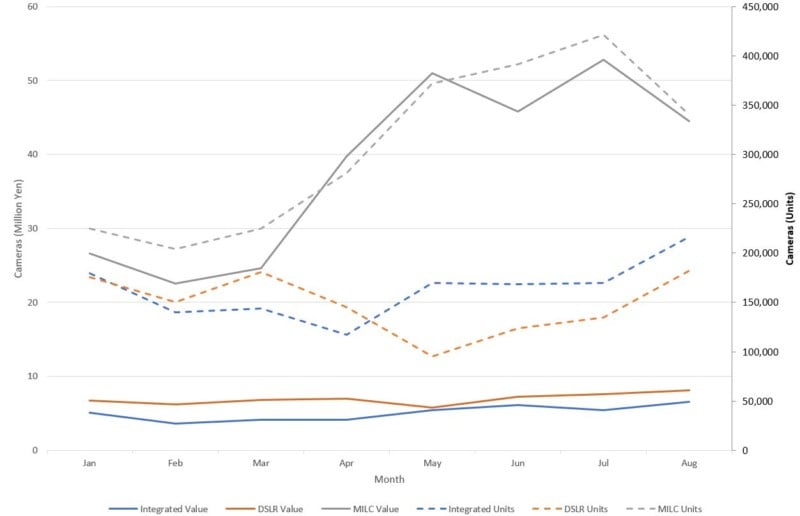The Average Digital Camera Price Has Doubled Over the Past Three Years
![]()
As the digital camera market contracts due to the popularity of smartphones, camera companies are finding that higher profits can still be reached by selling fewer cameras that cost, on average, twice as much as they used to.
In 2022, the average digital camera cost about $623, which is more than twice the figure from three years ago, according to the Camera and Imaging Products Association (CIPA) — a Japanese trade group — Nikkei Asia reports.
Major camera manufacturers have basically abandoned the point-and-shoot category of cameras since the cameras that come built-in to smartphones have completely replaced that segment. And as DSLRs are phased out, the more performant, more feature-rich, and more expensive mirrorless cameras have replaced them.
The result? CIPA says that shipments jumped 40% by value last year, which is the second year in a row that shows major gains for the camera industry as it emerged from the doldrums of the coronavirus pandemic.
Camera companies seem to be attributing the change to a growing interest in more performant cameras in the younger generations.
“Younger generations are growing more interested in photography from interacting with lots of pictures on social media, while older fans familiar with single-lens reflex cameras are interested in new technologies behind mirrorless cameras,” Hiroyuki Ikegami, general manager of Nikon’s Imaging Business Unit, tells Nikkei.
“Interchangeable lens cameras are becoming more popular,” CIPA President and Sony Group Vice Chairman Shigeki Ishizuka adds. “The spread of smartphones has made photography an everyday activity, leading to a surge in skilled photographers that are gravitating toward [interchangeable lens cameras].”
While that’s very likely part of the reason, it might be a lot simpler than that. As camera companies have gutted their product lines at the low end, all that remains for many of them are the higher-priced cameras that more obviously outperform the image quality that can be obtained from a smartphone. If someone is going to buy a camera, it’s going to be a more expensive model since that not only represents the biggest upgrade from a smartphone camera, it’s also basically the only option left.
Last October, PetaPixel reported that DSLRs not only sold far fewer numbers than mirrorless cameras, but did so at significantly lower prices — this is a trend that PetaPixel has observed now for several years.

Not only are mirrorless cameras selling in greater volumes than DSLRs by a large amount, but the price of a DSLR is also significantly lower than that of a mirrorless (noted as MILC in the chart above, or mirrorless interchangeable lens camera).
This basically explains why shipment value has jumped so notably in the last year and also explains how the average camera price has doubled since 2019. While Gen-Z is having fun playing with older point-and-shoot cameras, anyone who takes the hobby seriously will purchase a camera that is, on average, much more expensive than what was considered entry-level not too long ago.
Camera companies have found that they can sell fewer higher-end mirrorless cameras at a higher price and make more money from them than they can if they continued to sell lower-end, lesser-quality DSLRs. This situation is a good thing for the advancement of camera technology, but also shows that the hobby is, unfortunately, becoming a lot more expensive to get into.
Image credits: Header photo licensed via Depositphotos.